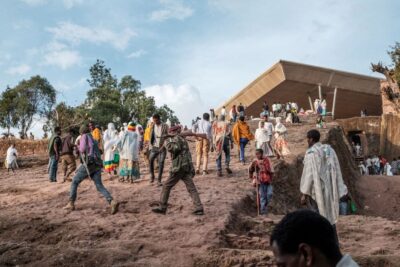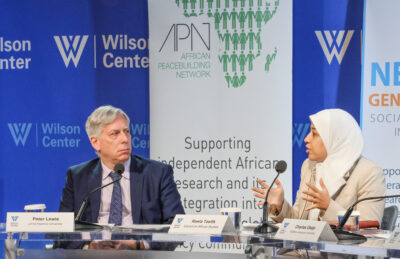The massive environmental changes affecting the earth today, including but not limited to global warming, are having and will have substantial impacts on land use. The extent to which land use will adjust effectively to global environmental change depends in large measure on the systems of landed property rights that govern land use throughout the world, and how adaptable these systems are. This is not a simple legal problem, but rather a complex problem of social decision-making: the bundles of rights and obligations referred to as landed property rights reflect deep social concerns in every society. Moreover, there is an important historical dimension to the problem, since landed property rights often change slowly over time. The project described here is designed to study the role of landed property rights in global environmental change. It is sponsored by the Council’s Committee for Research on Global Environmental Change, with initial funding from the National Science Foundation.1The membership of the committee presently includes Edith Brown Weiss, Georgetown University Law Center, chair; Richard A. Berk, University of California, Los Angeles; William C. Clark, Harvard University; Harold K. Jacobson, University of Michigan; Diana M. Liverman, Pennsylvania State University; William O. Nordhaus, Yale University; John F. Richards, Duke University; Thomas C. Schelling, University of Maryland; Stephen H. Schneider, Stanford University; and Billie Lee Turner II, Clark University. Descriptions of the committee and its work are in Social Science Research Council, Annual Report 1990-91, New York, 1992; Richard C. Rockwell, “Institutions: Social Science Research Council,” Environment 32(7): 2-4. September 1990, and Richard C. Rockwell, “Report: SSRC Committee for Research on Global Environmental Change,” Global Environmental Change 1(3): 254-258. June 1991. Like the committee’s other research activities, this one is being carried out by a consortium headed by a committee member.2Current members of the Research Consortium on Landed Property Rights are: Mr. Richards, chair; David H. Feeny, McMaster University; Eric T. Freyfogle, University of Illinois; Stephen F. Gudeman, University of Minnesota; Ronald J. Herring, Cornell University; Margaret A. McKean, Duke University; Peter C. Perdue, Massachusetts Institute of Technology (MIT); Karen B. Polenske, MIT; Steven E. Sanderson, University of Florida; Anna Tsing, University of California, Santa Cruz; and James L. Wescoat, Jr., University of Colorado. Planning for the project began with a workshop held in Durham, North Carolina in September 1991, sponsored by a transnational research planning grant from the Council and the American Council of Learned Societies.
This article describes the basic problems of landed property rights in global environmental change, theoretical issues and perspectives, the research approach, and plans for expanding the work to incorporate the insights of practitioners in sustainable development.
The problem
“The growth of world markets and the creation of standard commodities have stimulated production on the land.”Intensification of land use has been one of the defining traits of our shared modern world history. Over the past five centuries, the world’s lands have produced more and more goods and services to meet the needs of rapidly increasing human and domestic animal populations. The growth of world markets and the creation of standard commodities have stimulated production on the land. In varying sequences around the world expanding frontiers of settlement, cultivation, commercial pastoralism, timbering, and mining have characterized this expansion in productivity. Settler populations have displaced, marginalized, or extinguished thousands of groups of indigenous peoples whose use of the land was centered on hunting, fishing, shifting cultivation, or nomadic pastoralism.3J. F. Richards, “World Environmental History and Economic Development,” in W. C. Clark and R. E. Munn, eds., Sustainable Development of the Biosphere (Cambridge, UK: Cambridge University Press, 1986). Piers Blaikie and Harold Brookfield, eds., Land Degradation and Society (London and New York: Methuen, 1987), pp. 100–122. Douglass C. North and Robert P. Thomas, The Rise of the Western World: A New Economic History (Cambridge, UK: Cambridge University Press, 1973).
Massive transformations on the land have had large, cumulative effects on the global environment. For example, centuries of deforestation, expanding wet rice cultivation, and expanding livestock raising have made substantial contributions to the release of carbon dioxide, methane and other trace gases into the atmosphere. Pesticides, herbicides, and artificial fertilizers used in intensified agriculture have altered the natural environment throughout the world. Numerous other relationships between intensified land use and environmental change are easily discerned. Therefore, any effort to comprehend, to mitigate, or to adapt to global environmental change must necessarily address questions of changing human land use at varying space and time scales.
To understand human land use we must answer a fundamental question: Who has the right to do what with the land for how long? In each society drastic changes in the sets of rules for land use—the normative system of landed property rights—have permitted and encouraged increased exploitation. The centralizing state has asserted and later seized direct control over newly claimed frontier lands. New state-legitimized, market-driven holdings have swept aside the complex layered rights of access to land characteristic of tribal and peasant societies throughout the world. In some areas, new forms of land tenure have conceded nearly absolute right to dispose of all resources—animals, water, soil, forests, and minerals.
“Naming, surveying, mapping, and bounding parcels of land has been a critical task for every regime.”In every world region the state has imposed new landed property rights to secure and maintain intensified production on the land. Each state has carefully demarcated land in a new expression of human territoriality, i.e., “a powerful geographic strategy to control people and things by controlling area.”4Robert Sack, Human Territoriality: Its Theory and History (Cambridge, UK: Cambridge University Press, 1986). Naming, surveying, mapping, and bounding parcels of land has been a critical task for every regime. Landed property rights must be formally registered and approved by official agency. Taxation on the land and its production, unless specifically forgiven, has invariably accompanied demarcation and registration.
Land rights thus obtained have acquired new monetary value in a market for land. “[C]ommercialization of the soil” has been an essential step in meeting the ever-growing needs of an industrializing and urbanizing world order.5Karl Polanyi, The Great Transformation (Boston: Beacon Press, 1957; reprint of 1944 edition), pp. 178–179. As development frontiers advance, land tenures ratified by the state rise in value. Generally, responding to buoyant regional and international commodity demands, land managers have engaged in largely unimpeded exploitation of their holdings. Indeed, those land owners who fail to make the most intensive use of their holdings may suffer disabilities. To obtain legal title pioneers routinely have cleared land as evidence of productive use. Today on the Amazonian frontier, occupancy supported solely by hunting or other forms of forest extraction is not sufficient to support legal ownership for the settler.6Susanna Hecht and Alexander Cockburn, The Fate of the Forest: Developers, Destroyers and Defenders of the Amazon (London and New York: Verso, 1989), pp. 151–152.
Over the last century or so, restraints on the market and landed property rights have reappeared. In this countervailing trend, communities and state agencies have begun to impose zoning and other restrictions aimed at conservation and preservation of natural resources or ecosystems. Modern societies thereby reintroduce more complex, bundled, land tenures. These constrain land use within certain acceptable modes and reduce the scope and operation of the market for land. Although still subordinate to the drive for production, these conservation or preservation-oriented property rights have been gaining steadily in scope and importance. More recently, social scientists have rediscovered common property systems that at local and regional scales seemingly have managed their resources on a sustainable basis. Increasingly, theorists are looking to various common property models to provide a better approach to land management.
A new global discourse is emerging in which environmental issues and questions of proper land use play a prominent role. Increasingly, environmentalists are claiming new transnational property rights in land. Transnational claims assert the value of lemurs in Madagascar, gibbons in Indonesia, or tropical forests in the Amazon. Organizations like the World Wildlife Fund now extend a specialized property claim on behalf of humankind and assert the value of lemurs against the indigenous owners of lands in Madagascar. Associated with this is a reversal of terms like “upgrading” and “degrading” of land—both social constructs and moral judgments. Under conventional norms of productivity land was upgraded and made more valuable by reducing biodiversity and biomass to improve output. From today’s ecological perspective, reductions in biodiversity and biomass are seen as degrading the land and lessening its value. The clash between these opposed moral perceptions is expressed in the struggle over property rights in land.7Ronald J. Herring, guest ed., Agriculture and Human Values, 7 (Spring 1990), special issue: “Development Pressures and Ecological Constraints: The Deltaic Forests of India and Bangladesh.” Also Harold Demsetz, “Toward a Theory of Property Rights,” American Economic Review, 57 (May 1967): 347–359, and Harold Demsetz, “The Property Rights Paradigm,” Journal of Economic History, 33 (March 1973): 16–27. Terry L. Anderson and Peter J. Hill, “From Free Grass to Fences: Transforming the Commons of the American West,” in Garrett Hardin and John Baden, eds., Managing the Commons (San Francisco: W. H. Freeman. 1977).
A workable taxonomy of property rights or regimes in land exists. Property rights in land can be classified by type of ownership. The spectrum includes: unowned property; state property (both public property held in trust and state property); the property of groups of individuals (jointly-owned or common); and individually owned private property. For many sorts of analyses this taxonomy is useful and appropriate. But for a close study of the global context of rights in land and the relationship of these rights to environmental change, this scheme is not sufficient. We need a much more supple and powerful way to think about property rights in land. In a broader sense, we are really looking at the relationship between culture, nature, and place.
“How do we untangle the complex, interwoven, legal systems that define land rights in every society?”How do we study comparatively and globally modern regimes of property rights in land? Have there been converging trends in landed rights in recent world history? Is the model set out above accurate? Do certain property regimes invariably lead to environmental stress and degradation on the land while others do not? Or, alternatively, do property rights systems simply reflect and respond to the larger forces of markets, population pressure, or state policy? How do we untangle the complex, interwoven, legal systems that define land rights in every society?
Shared theoretical issues and perspectives
The September 1991 planning workshop, held under the auspices of the Council’s Committee for Research on Global Environmental Change, identified several significant theoretical issues embedded in any comparative study of property rights and land which must be addressed in the project. In their case studies and critical reviews, consortium participants will explicitly discuss these issues—although emphases will certainly vary by discipline and by the society and period studied. These shared theoretical concerns are as follows:
• First, land as immovable property has distinctive qualities. One, of course, is location in space. Land acquires value for its owners in part by its location in a continually changing social and natural context. Certainly value by location figures heavily in any market for land rights. Property rights in land may also confer social identity and confirm the cultural heritage of an individual, a lineage, an organization, or a nation-state. In some instances, these landed rights are held to be non-negotiable and nontransferable and must be defended by extreme means.
• Second, differing scales of application are important. We live in multiple communities at local, regional, national, and increasingly, at global levels. Property rights in land may well be differently understood in each of these communities. Certain kinds of relationships exist within small local communities that are impossible in larger units such as nation-states.
• Third, land rights invariably consist of complex “bundles” of rights and must be viewed from that perspective. Access to subtractible resources—soil, water, minerals, plants, wildlife—are part of the rights to be allocated. Territorial rights include the right to exclude others from occupancy and/or from access to land resources. Obviously these rights can be allocated among several owners in intricate ways or they can be retained by a single owner. Entire bundles or a single element of these rights may be transferred to other owners.
• Fourth, property rights are made within communities. Any functioning set of property rights in land must possess a moral grounding in the culture of the community. To be effectively enforced, rules governing the use of land assets, including space for occupancy, must rest on shared cultural assumptions about the proper use of those assets. Serious conflict can arise when community conceptions of property rights clash with those held by the state or ruler. Finally, property rights in land emerge from and are defined by a continuing process of conflict and negotiation. Even the most rigid of property regimes is constantly challenged, altered, and redefined. Therefore, a cross-section of established property rights at a single date, as defined by the state, fails to convey the extent to which property rights form a changing social construct. The specific historical context in which conflict occurs is an important object of study. Conflict and negotiation over land occurs within societies and, most dramatically, between societies. Often an invading or intrusive state imposes new forms of more uniform land ownership in the face of dogged resistance from local communities possessing their own systems of landed property rights. The resistance of existing property rights systems to change is another important variable. A significant empirical question is: How do people behave when their property rights in land are threatened with change? Any consideration of property rights in land must include an analysis of past, present, and future change.
The approach
The project is structured around an interactive research process that includes a total of four two-and-a-half day group meetings to be held over a two-year period. This process is one of the most important aspects of the project. At the first working meeting of the consortium (February 26–28, 1993), participants are presenting proposed topics for group consideration. Each participant will write a substantial scholarly paper over the course of the two-year period. The papers will present data and analysis from one or more case studies of changing property rights in land drawn from the scholar’s world region of expertise, e.g., Southeast Asia. After intensive consideration of each paper by the group, participants will refine their approaches. Some papers may be confined to a single case study; others may adopt a broader synthetic or comparative perspective. By initially sharpening the actual paper topics and scholarly approaches to be taken, we will contribute directly to the coherence of the published work of the project. At the second meeting, each participant will present a draft of his or her paper. At the third and fourth meetings, each paper will be presented, critiqued by the group, and subsequently revised for future publication in a volume to be edited by John Richards. For each workshop session an outside commentator will be invited to help critique the work in progress and, if necessary, to challenge assumptions already made by the working group.
“Our approach is to organize a sustained, creative conversation about the topic that will build from one session to the next.”In other words, our approach is to organize a sustained, creative conversation about the topic that will build from one session to the next. Each author will benefit from group critiques and discussions at the meetings and from informal networking and exchanges as the project progresses. This interaction ensures a better, more coherent set of papers than that emerging from the ordinary one-meeting workshop or symposium. That this is a truly interdisciplinary enterprise will also challenge many unspoken assumptions and lead to clearer, fresher thinking on the issues.
Extensions of the project
Plans are being formulated to expand the scholarly project described above to include practitioners in sustainable development. This would add to the project in two important ways. First, an additional workshop would be held, at which the research team will discuss their findings and their potential applications with practitioners of sustainable development and environmental management. The invited practitioners will provide their own critiques and perspectives on the work in draft. This will be an exceptional opportunity to trade ideas and information. Second, a monograph based on the workshop will be written, which would make available to practitioners the principal practical implications of the research work. The monograph will be a working guide that will complement the scholarly volume to be produced.
Given that this topic has been insufficiently studied, it is hoped that this project will contribute fundamentally to knowledge and understanding of the role of landed property rights in global environmental change.
John F. Richards (1938–2007) was professor of history at Duke University, a member of the Council’s Committee for Research on Global Environmental Change (GEC), and head of the committee’s research consortium on landed property rights and global environmental change. David C. Major is an economist and natural resources planner. He currently serves as adjunct senior research scientist at the Center for Climate Systems Research, Columbia University. He served as staff to the GEC.
This essay originally appeared in Items Vol. 47, No. 1 in March of 1993. Visit our archives to view the original as it first appeared in the print editions of Items.













